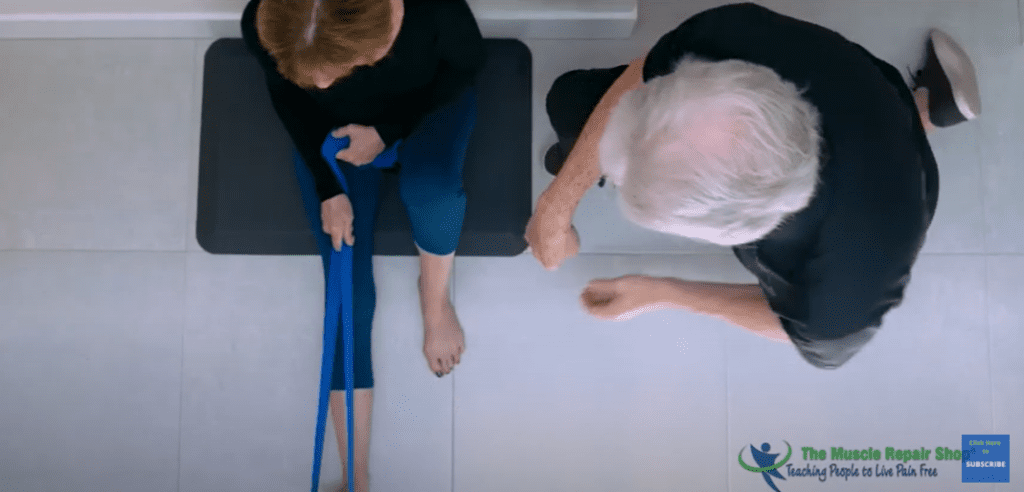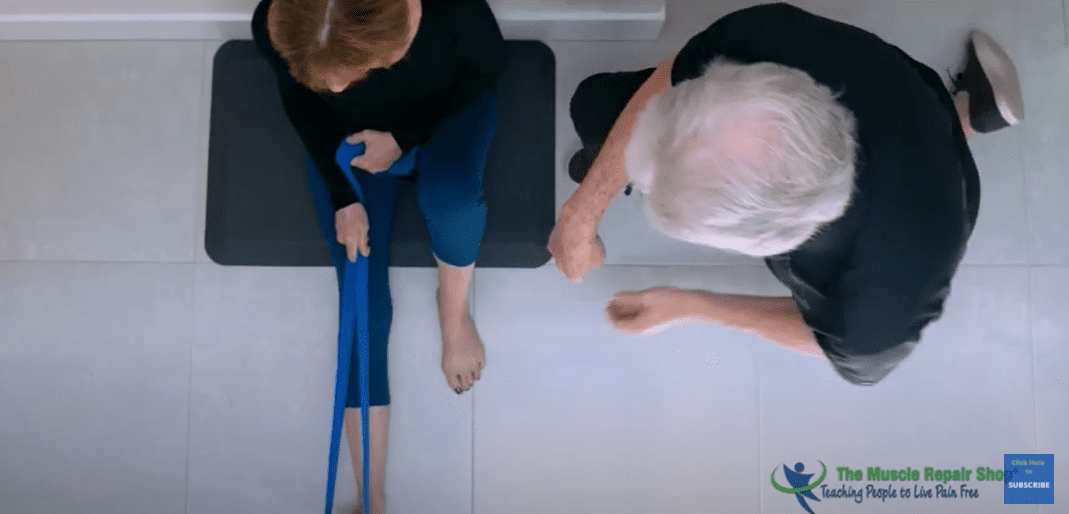So you are getting ready to play tennis and you know should warm up and do some tennis stretches before playing the match. You lift your foot, if you can, and set it on top of the net to stretch your hamstring, right? You stand there talking to your friends for 20 seconds to a minute, because the longer you stand there, the better the stretch, right?. You take that leg down and then place the other foot up there and repeat the same process. How cool! I can stretch my hamstring and talk to my friends at the same time.
Most of my friends are impressed that I can actually get my foot up to the net. The ones who cannot reach the net will sit on the bench, stick their leg out in front of them and bend their ankles to stretch their calves. The rest of the players will just fly onto the court and began to play because they just do not have time to stretch and besides they do not need it. They stretched yesterday at the gym. Does this sound familiar?
In all of these scenarios, none of these people have actually stretched anything. In fact, the last group that didn’t try any tennis stretches has the best chance of not having an injury while playing. The first group is doing what they were told to do by their pro or instructor. The problem is, they are doing strength training disguised as stretching.
The Problem with the Standing Stretch
First of all, standing in that position is an act of balancing which means their calves, feet, and thighs are all contracting so they do not fall down. Secondly, they have to contract their abdominal muscles to lean forward, tightening the ab muscles. Finally, there are three hamstring muscles and they are trying to stretch all three at the same time which is impossible. All three hamstring muscles are important for tennis because you are running in many different directions and stretching them in one direction is just wrong! As a side note, the four calf muscles need to be stretched to help the three hamstring muscles work better.
Seated, But No Stretch
The second group is trying to stretch their calf muscles, but they are tightening their shin muscles which will lead to shin splints. Sitting with your leg out in front of you and bending your foot back towards you requires the contraction your shin muscles which will cause them to tighten. I know, I know, you have been told that you should contract your muscle and release. Contract again and release, which is supposed to stretch the opposing muscle. All you have done has fatigued the muscle you have been contracting.
The last group doing nothing at all, are at least not tightening their muscles more than they already are, but they are still tight and will eventually hurt themselves. So what should you do?
Tennis Stretches That Do Work
Here is a description of a tennis stretch that will prepare you for a safe game.
https://www.youtube.com/watch?v=mvQVtCKQO5k

Get a yoga strap, rope, or belt to stretch. Do not use an elastic band as they were designed for strength training. You can sit on the ground or sit on the bench with your foot on top of something like an ottoman. Place the strap around the ball of your foot and gently pull the strap towards you without using your leg muscles, only your arms.
This will stretch the 2 middle calf muscles attached to the Achilles tendon. As you begin the stretch breathe out and focus on letting these two muscles relax.
You need to focus your brain on the stretch or the stretch is lost. The brain is the most important part of stretching. You have heard of the mind/body connection in yoga classes? This is very similar except we don’t hold the stretches for a long period of time. Only hold the stretch for 3-5 seconds and repeat the stretch 8-10 times. I will talk about more later. Now, rotate your foot to the middle of your body and repeat the stretch. Finally, rotate the foot to the outside of the body and repeat the stretch again.
The reason for holding the stretch for just 3-5 seconds is to avoid the stretch reflex, which is in every muscle we have. That is what keeps you free of danger until our thoughts override it, this causes injuries.
Allowing the muscles you are stretching to relax frees the joint in that area and gives the brain the opportunity to release the muscle. Repeating the stretch 8-10 times allows you time to acclimate to the movement and let your brain learn that your body can move that way.
Focusing on the stretch versus talking to your friends allows your brain to release the emotional tension and then the physical tension in the muscle. If you occupy your brain with information that can cause stress, sadness, anger, or even happiness the brain will not let the muscle release and in some cases may even tighten the muscles more
Tennis is a great game, but if you are not prepared to play the game, injuries will occur. My clients that do play tennis love the fact that their new flexibility improves the way they can hit the ball, attack the net, and chase down balls they could have never gotten to before adding this type of stretching to their game. My oldest tennis player is 89 years old and he plays 3 times a week against 70 and 80 year old opponents. His average game last 2-3 hours. Oh , did I say he also built his own ranch at 87.


